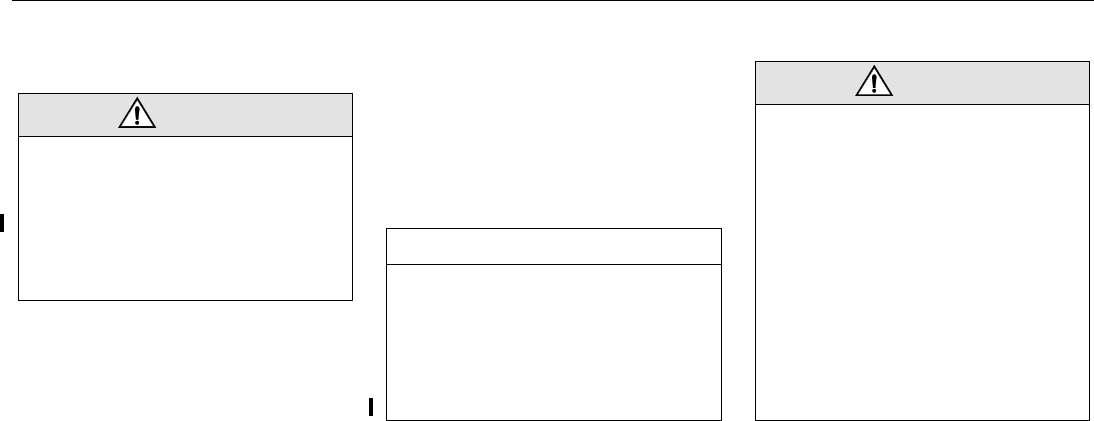
208 Starting and driving
Driving with the
compact spare tire
Observe the following when the compact
spare tire is fitted:
• The compact spare is light and easy to
handle when changing a tire.
• Do not drive further than necessary with
the compact spare fitted - the maximum
life of the tire is only just over 2,000 miles
(approx. 3,500 km).
• Refit the standard tire as soon as possi-
ble.
Important considerations when driving with
a compact spare tire:
• The car’s ground clearance is reduced.
• The car must not be driven with more than
one compact spare tire at a time.
• Avoid driving against the curb.
• Do not use snow chains.
• Do not fit the wheel cover - this would
conceal the warning text.
Jump starting
WARNING
• Do not exceed 50 mph (80 km/h). The
tire can overheat affecting the car’s
roadholding.
• Tire pressure: refer to page 304.
• The spare tire or punctured tire must
be stowed under the trunk floor, and
secured in place with the retaining nut.
NOTICE
To avoid damaging a alloy wheel of a
punctured tire, this can be temporarily
placed outside up in the spare wheel well
but only while driving to the closest work-
shop.
As a general rule, all heavy loads must be
well secured in the trunk (see page 149).
WARNING
• When working on the battery, highly
explosive gas can build up. A spark
could ignite this gas that collects
around the battery. Therefore, always
avoid sparks and open flames in the
vicinity of the battery.
• The battery contains corrosive sulphu-
ric acid. Always wear a face mask or
goggles when working on the battery.
• If battery acid gets into the eyes or
splashes onto skin or clothing, wash
the affected area liberally with water. If
acid gets into the eyes or a large quan-
tity makes contact with the skin, seek
medical help.
93U SM 06.book Page 208 Friday, February 18, 2005 1:15 PM


















